Most preppers focus on the basics: rice, beans, maybe some freeze-dried meals, and if you’ve been at it a while, probably even hardtack. We’re all after the same three things: cheap, simple, and long-lasting…
But there’s one old-school recipe most preppers overlook: ANZAC Biscuits.
Born out of wartime necessity, these biscuits were designed to survive long shipping journeys and brutal storage conditions. Without refrigeration, fancy preservatives, or going stale. That alone should get your attention. But here’s the kicker: they actually taste good, making them the kind of morale booster you’ll be thankful for when things go sideways.
What Are ANZAC Biscuits?
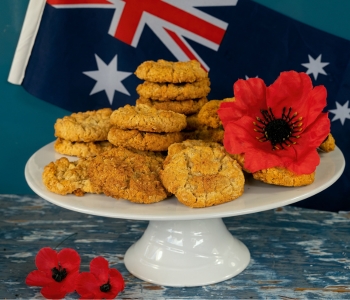 ANZAC stands for Australian and New Zealand Army Corps, and these biscuits have deep roots in that history.
ANZAC stands for Australian and New Zealand Army Corps, and these biscuits have deep roots in that history.
Back in World War I, families and women’s groups back home wanted to send care packages to soldiers fighting overseas, as U.S. allies.
The thing is that whatever they sent needed to survive months at sea without refrigeration or special handling.
That’s where these biscuits came in. Tough, tasty, and made from pantry staples, ANZAC Biscuits became a symbol of resilience both on the battlefield and at home.
They were cheap to make, easy to bake in large batches, and packed a decent calorie punch.
Even today, these biscuits are baked across Australia and New Zealand around ANZAC Day (April 25th) to honor veterans and remember the past.
For preppers, though, they’re a very practical solution to a modern problem: how to feed yourself and your loved ones when the store shelves are empty, and the grid is down.
Let’s face it: most of today’s “survival snacks” are expensive, overly processed, and filled with stuff you can’t pronounce. ANZAC Biscuits are the opposite. In short, ANZAC Biscuits are an early example of survival food done right.
While doing my due diligence for this article, I was reminded of the famous “Doomsday Ration”—the U.S. government’s solution during the Cold War. It also included a special type of biscuit, along with other cheap, long-lasting foods.
Of course, everything was lightweight, making it perfect for a bug-out bag and easy storage.
In fact, the goal was to feed every American for just $0.37 per day. I found the full details, including what it contained and how you can make your own version, right here.
How to Make ANZAC Biscuits
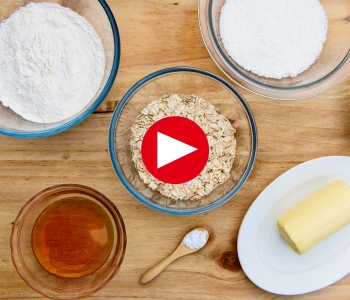 You don’t need a fancy kitchen or specialty ingredients to make these biscuits. That’s one of the reasons they’ve survived over 100 years, just like many must-have survival foods you don’t know about, and why they fit so well into any prepper pantry.
You don’t need a fancy kitchen or specialty ingredients to make these biscuits. That’s one of the reasons they’ve survived over 100 years, just like many must-have survival foods you don’t know about, and why they fit so well into any prepper pantry.
Ingredients
- 1 cup rolled oats
- 1 cup all-purpose flour
- 1 cup sugar (white, or use brown for a richer flavor)
- 1 cup desiccated coconut (optional but traditional, because it adds flavor and texture)
- 1/2 cup (1 stick) butter
- 2 tablespoons golden syrup (you can use alternatives like honey or corn syrup)
- 1/2 teaspoon baking soda
- 2 tablespoons boiling water
Optional Substitutions:
- No butter? Use ghee, lard, or coconut oil.
- No sugar? You can use honey, molasses, or powdered maple syrup.
- Gluten-free flour or oat flour can be used in a pinch.
Pro tip: You can pre-mix the dry ingredients in vacuum-sealed mylar bags to create “ANZAC baking kits” for future use. Just add the wet ingredients when you’re ready to bake.
Allergen Disclaimer: This recipe contains oats, wheat flour (gluten), and optionally desiccated coconut, all of which can trigger allergies or intolerances in some individuals. If you or someone in your group is sensitive to gluten, coconut, or oats, be sure to substitute with gluten-free flour, certified gluten-free oats, or omit the coconut entirely. Always label stored batches clearly to avoid confusion during emergencies.
Cooking Instructions
Step 1: Mix the dry ingredients – In a large bowl, combine oats, flour, sugar, and coconut. Stir them together until evenly mixed.
Step 2: Melt the butter and syrup – In a saucepan over low heat, melt the butter and golden syrup (or honey). Don’t boil it, just melt and mix until smooth.
Step 3: Add baking soda to hot water – In a small cup, mix the baking soda with boiling water. It’ll fizz up, that’s normal. This is what gives the biscuits their rise and chew.
Step 4: Combine wet and dry – Pour the soda mixture into the melted butter/syrup, then immediately stir it into the dry ingredients. Mix until sticky and cohesive.
Step 5: Shape the biscuits – Scoop out walnut-sized portions, roll into balls, and place on a greased or lined baking tray. Flatten slightly. Leave space, because they’ll spread.
Step 6: Bake – Bake at 325°F (160°C) for 12–15 minutes. For chewy biscuits, pull them out early. For long-term storage, bake 15–18 minutes until golden and crisp.
Step 7: Cool completely – Let cool on a wire rack. Don’t store them warm, because trapped moisture = spoilage.
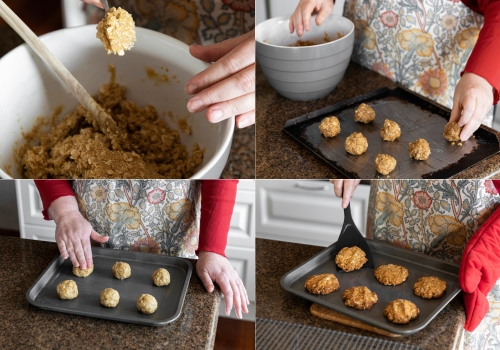
If you’re baking off-grid, a solar oven works well, aim for a steady temperature of around 300–350°F and bake the biscuits for 15 to 20 minutes, rotating the tray once halfway through to ensure even cooking.
In case you’re using a Dutch oven, place it over hot coals and add a few coals on the lid for top heat; check the biscuits after about 15 minutes. With a rocket stove, maintain steady, indirect heat and be sure to rotate the tray frequently to avoid burning, as these stoves can create uneven hotspots.
Nutritional and cost information: Each biscuit provides ~120 kcal (15g carbs, 6g fat, 1–2g protein) One batch (20–24 biscuits) costs around $5–7, depending on what you already have in your pantry. Compared to store-bought survival bars, that’s a steal.
How Long Do ANZAC Biscuits Last?
Historically, these biscuits reached soldiers months after shipping and were still edible. But with modern techniques, we can do even better.
- Room Temp in Tin: 2–3 months
- Cool, Dry Pantry (sealed): 6–12 months
- Mylar Bags + Oxygen Absorbers: 1–2 years, potentially up to 5 years
After year two, flavor and texture may degrade slightly, even if the biscuits remain safe to eat.
Testing Tip: Store a test batch and check after 6 months, 12 months, etc., before committing large stockpiles.
How to Maximize the Shelf Life of ANZAC Biscuits
With the right preparation and storage, ANZAC Biscuits can last from 2 to even 5 years, making them a valuable addition to any long-term food supply. The key is to remove as much moisture as possible.
That means baking them until they’re fully crisp, not chewy. Some preppers take it a step further and run the cooled biscuits through a low-temperature dehydrator for a few hours, which helps eliminate residual humidity without altering the taste or texture too much.
Once completely dry and cool, it’s time to seal them up. Exposure to air, light, and moisture is what causes most food to spoil—so cut those out, and your biscuits will last significantly longer.
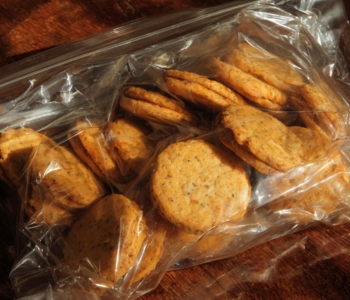 Here are the best storage methods used by preppers:
Here are the best storage methods used by preppers:
- Mylar bags with oxygen absorbers (300cc–500cc): Best for long-term shelf life. Protects from light, air, and moisture.
- Vacuum-sealed bags: A good alternative for short- to mid-term storage if you don’t have mylar.
- Glass jars with desiccant packs: Ideal for smaller batches. Must be airtight and kept away from humidity.
- Old-school biscuit tins: Still effective, especially when lined with wax or parchment paper.
- Food-grade buckets: Great for bulk storage when combined with sealed mylar bags inside.
Pro Tip: Always store your containers in a cool, dark, and stable environment—like a basement, root cellar, or this underground bunker (it’s affordable and easy to build). Avoid places with fluctuating temperature or humidity.
Mind you, there’s no absolute guarantee that ANZAC Biscuits will remain edible for 5+ years, especially in uncontrolled environments. Shelf life can vary depending on storage conditions, ingredient freshness, and packaging method.
However, when stored properly and checked periodically for signs of spoilage, many preppers have successfully kept batches for several years without issue. As always, use your senses: if it smells off, looks strange, or tastes rancid, toss it.
ANZAC Biscuits vs. Hardtack
Both ANZAC Biscuits and hardtack have earned their stripes as survival foods. Each was developed during wartime, designed to last for months (or years) without refrigeration, and made to withstand the harsh realities of transport, storage, and scarcity.
But while they may seem similar at first glance, they serve slightly different purposes, and depending on your prepping goals, one may suit your needs better than the other. Here’s a break down:
| Feature | Hardtack | ANZAC Biscuits |
|---|---|---|
| Origin | 1600s (Europe) | World War I (Australia/New Zealand) |
| Ingredients | Flour, water, salt | Oats, flour, sugar, butter, syrup, coconut, baking soda |
| Texture | Very hard, almost rock-like | Chewy to crisp, more pleasant |
| Taste | Bland, neutral | Sweet, hearty |
| Shelf Life | Decades if kept dry | 1–5 years with proper storage |
| Portability | Lightweight and compact | Slightly heavier |
| Preparation | Baked until extremely hard | Baked until golden, can be chewy or crisp |
| Consumption Tips | Needs soaking in water/broth to soften | Ready to eat as-is |
| Nutritional Value | Basic carbs and calories | More calories, natural fats and sugars |
| Use Case | Long-term fuel | Energy and morale booster |
| Appeal | Pure survival food, no comfort | Tasty, morale-boosting survival snack |
Ultimately, it comes down to what you value most in your survival food. If your priority is maximum longevity and indestructibility, hardtack is hard to beat. But if you’re also planning for morale, quick access, or a touch of comfort when things get tough, ANZAC Biscuits may be the better fit.
So if you’re wondering which one you should stockpile… The smart answer is: why not both?
Use hardtack for extreme long-haul prepping, underground caches, and barter. Use ANZAC Biscuits for rotation in your pantry, bug-out bag, and homestead snacks.
In case of a crisis, you could even use them as barter items. People, especially those with a sweet tooth, will do anything to get their hands on a tasty treat.
If recipes like Hardtack and ANZAC Biscuits inspire you, why not also borrow a trick or two from the world’s most powerful armies when it comes to getting water?
Specialists from the U.S., U.K., and French armies have come up with an ingenious solution that’s affordable, easy to assemble, and portable. Plus, it can produce up to 40 gallons of water per day.
It’s used on some of the harshest frontlines in the world, as well as The Water Freedom System, but now it’s available to you too… Forget about drought worries with this highly efficient water generator that can fit in a backpack!
Final Thoughts
Too many folks think prepping means stocking up on expensive freeze-dried meals and survival rations you can’t pronounce.
But history has already given us the tools we need and ANZAC Biscuits are proof of that.
Skip the overpriced survival bars. After all, this 100-year-old recipe lasts for years, costs pennies, and actually tastes good!
If you’re interested in old-school prepping, here’s your chance to learn from someone who grew up in a community where survival depends on these very methods. Eddie Swartzentruber reveals the most important secrets of the Amish Community in The Amish Ways Book. Discover all about food preservation and off-grid living!
You may also like:
Turning Flour into Hardtack Biscuits With Over 100 Year Shelf Life
Break Free from the Water Grid with Just $270 and One Hour of Your Time (Video)

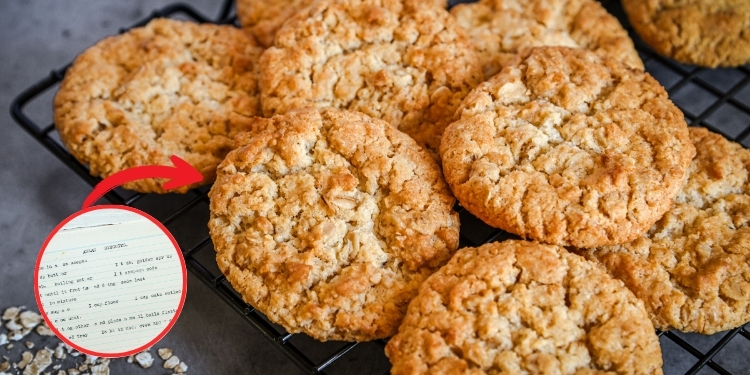
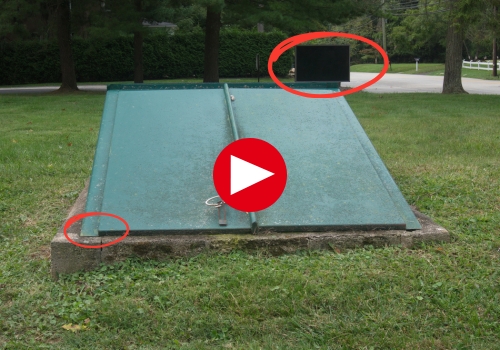
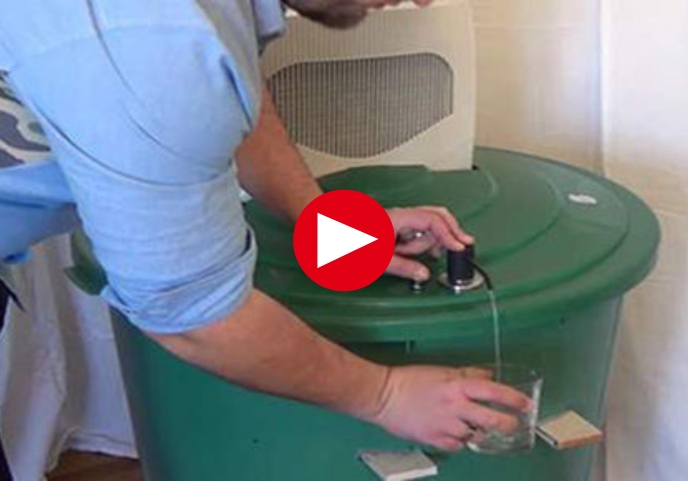





















this sounds like a good reciepe that i’m going to try. i’ll have the grandkids help me make them. putting the dry ingredients in vacuum sealed bags is a good idea also, thankyou for the article.
That sounds wonderful! The grandkids will love helping, 100%!
Vacuum-sealing the dry mix really does make them handy for long-term storage or quick baking later. Let me know how they turn out when you make them!
Use organically grown oats since oats are one of the crops that use the pesticide “glyphosate” big time, and it has been shown to cause cancer in studies. Not “might” cause cancer, but “does cause cancer. It’s not difficult to find organic oats and it is not much more $. Worth it for more safety .
Need to try this.
Just made hard tack.
JoAnn
Hard tack is a great survival classic, JoAnn! Would love to hear what you think after you try them!
Guys, what do you think of the US’s relationship with Brazil?
Hey Jose, not sure what the US-Brazil relationship has to do with ANZAC biscuits 🙂
But I’d say it’s a complex mix of trade, diplomacy, and occasional political friction… worth a deeper dive for sure!
Hi, I know my comment isn’t related to the post; it’s because it’s the most recent. Since I live in Brazil, I’d like to hear your perspective on this. Thank you.
Thanks for introducing me to something new to try. I have made a copy of the recipe and tucked in the back of my Super Foods collection.
Awesome, glad you’re excited to try the recipe! It’s a great addition to your Super Foods collection. Let me know how it turns out!
Caleb, they turned out great. I added some macadamia nuts (that you probably would not do for longtime storage) and they are the best ever. The whole family knows I can be a real cookie monster and these are going to be a regular around this household.
Howdy from high in the desert swamp,
I involve my granddaughters every time I have them. Whether it’s a walk in nature looking for something in a scavenger hunt style, helping around the pit, or in the kitchen. They are 7 and 5 and have had a spoon in everything you can think of helping. They watch the canner when it’s rattling. They have seen jars go in and come out. When they go to school, they tell teachers what they have seen, cooked or canned. Last time we made jelly, they did all the measuring. I did the hot part but they had it all ready for me and watched from across the room because it was boiling. They are years ahead in verbal and reading development and frankly I would rather take them camping than most big people. It’s never too early to take kids away from video games.
REMEMBER THE ALAMO
REMEMBER 9/11
REMEMBER NORTH CAROLINA
REMEMBER TO HAVE YOUR SOUL PREPARED
That’s beautiful. You’re giving your granddaughters the kind of education no school can provide. You’re setting them up to be leaders, not followers. Respect for how you’re passing on those lessons. That’s the real kind of legacy.
Finally, something i can prepare myself being culinary skills deficient, i can throw something in the frying pan or in the oven, but that’s about it.
From all i have read, moisture absorbers are what’s needed, as oxygen absorbers will create an anabolic environment that promotes fungus growth etc.
For long term storage vacuum out all the air and introduce some nitrogen, it will kill off all pathogens.I have heard from people who use it for long term storage of beans, grains etc. & have reported they have lasted 40–50 years or more with no loss of taste or freshness, perfectly usable going on 1/2 a century.
Hard Tack is empty calories with no nutritional value & in fact, white flour is toxic to humans, over time you can not survive on it. All it does is provide something to take away some hunger pains by putting something in your stomach.Brazil has the best attitude towards health care because it is free & a constitutional requirement for anybody on Brazilian soil, citizen, resident or not, it’s free, no waiting, no appointments you walk in and walk out.Scripts you do pay for but compared to USA prices you are getting them @wholesale price like you would if you imported them from China, India etc. importing scripts you use daily you probably could import with worrying about any jail time as long as it’s for personal use but don’t quote me about that check first. I hope this helps.
Thanks for sharing your insights! I totally get the “throw it in the pan or oven” approach.
You make a good point about moisture vs. oxygen absorbers; long-term storage is tricky, and it’s interesting to hear about nitrogen flushing for beans and grains lasting decades. That’s impressive!
I also agree about hardtack. It is, indeed, more of a stopgap than real nutrition. Definitely not something you’d want to rely on long term.
Really appreciate the detailed tips and perspective!
Where can you get the nitrogen to put into the bag though? Are nitrogen cartridges available?
As an Aussie I can attest to the great taste of these biscuits. And they do last well – if you can hide them from the kids!
Made these today, really surprised by the taste. Thought they would taste more like a biscuit than a cookie.
Anzac Biscuits feel comforting and familiar, almost like a childhood treat. The subtle caramel notes from the syrup make them taste richer than they look. Definitely a biscuit you don’t rush while eating.